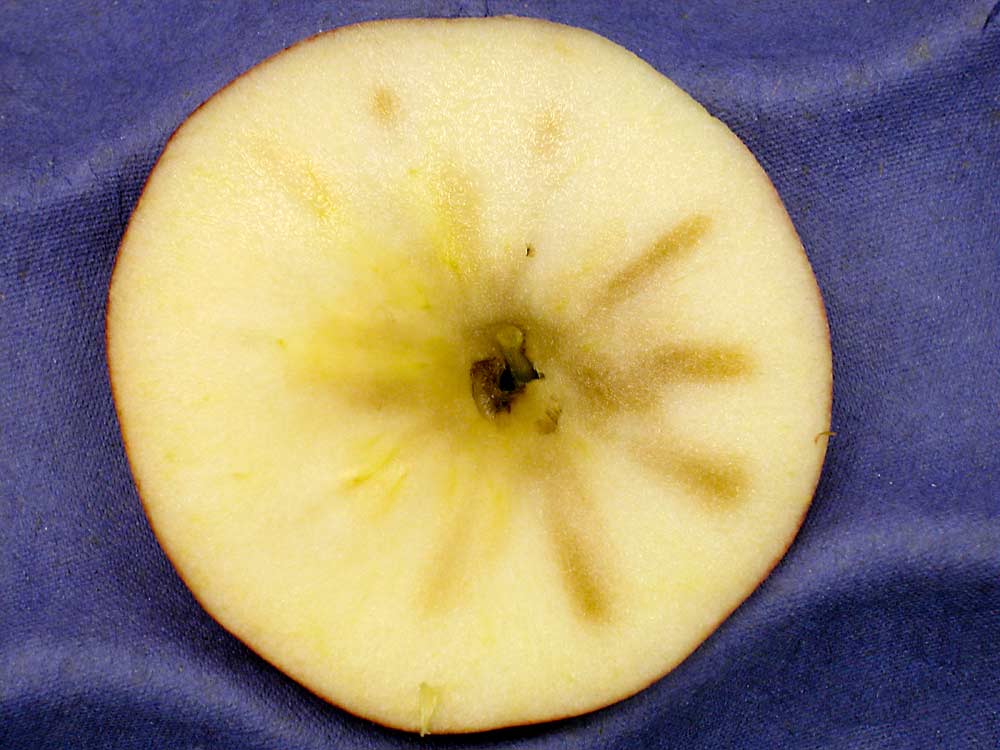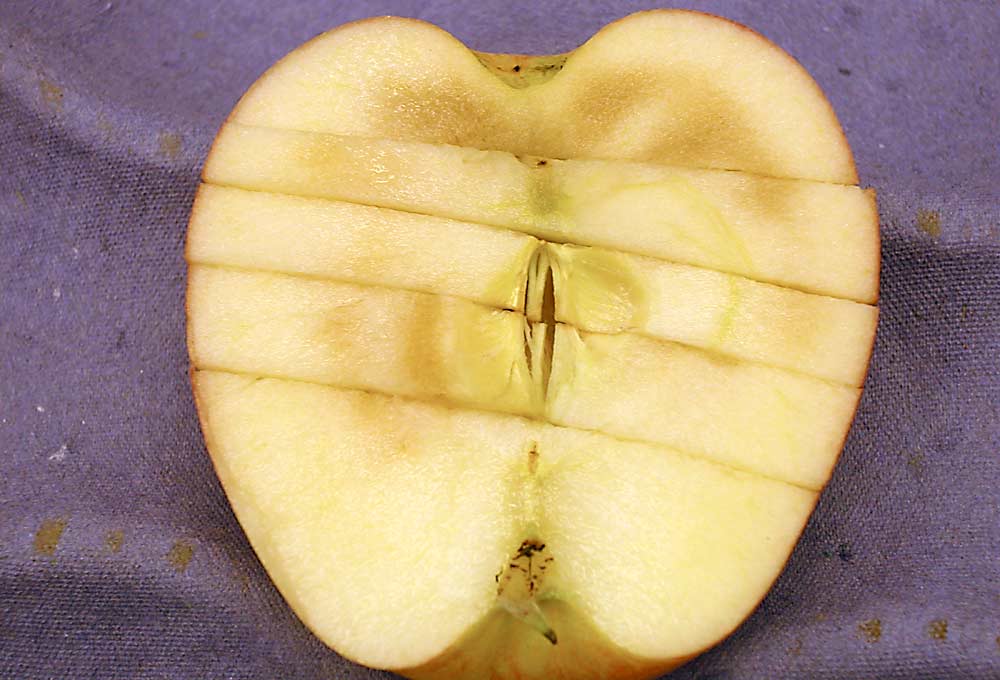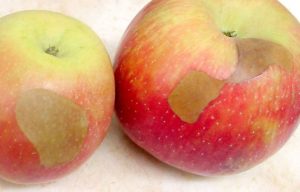
As Gala production has grown — it passed Red Delicious as the top U.S. variety a few years ago — a new problem has emerged: stem-end flesh browning in storage.
To meet market demands, U.S. growers produce and store more Galas than ever before. But that means the early variety, harvested in late August or early September, is being held in storage for much longer than in the past — sometimes as long as 10 months, said Joel Crist, a grower who also runs a storage and packing facility in New York’s Hudson Valley.
In the past several years, storage operators have observed that the flesh of many Galas in long-term storage turns brown at the stem end: a disorder that progresses until the apples are unsellable. Cornell University horticulture professor Chris Watkins said the disorder, called stem-end flesh browning, has been observed in multiple varieties, but the prevalence of Gala has made the popular variety the focus of prevention efforts.
A small but growing body of evidence suggests the risk of developing the maturity-related disorder can be reduced with earlier harvest, preharvest sprays of 1-MCP, warmer storage temperatures and low-oxygen storage techniques, according to a nationwide group of researchers working on the problem.
Crist said stem-end flesh browning could threaten the long-term domestic supply of Galas. Customers won’t buy bad Galas, and growers won’t grow Galas if they can’t make a profit. Losing 5 percent of your Gala packout to the disorder might not sound like much, but after all the expenses involved in getting those apples into storage, that 5 percent could be the difference between making money on Gala or losing money on Gala, he said.
The Cornell researchers have not yet found a cause, or a way to completely stop the disorder, but they discovered that using a combination of plant growth regulators ReTain (aminoethoxyvinylglycine, or AVG) and Harvista (1-methylcylcopropene, or 1-MCP) in the orchard and dynamic controlled atmosphere (adjusting oxygen levels) in storage can delay its onset, Watkins said.
The disorder is associated with advancing maturity. Its pervasiveness seems to vary from block to block. It’s less of a problem in higher-colored Gala strains, but that’s probably because growers tend to harvest those earlier. They discovered that raising storage temperature from 33 degrees Fahrenheit to 38 degrees can significantly reduce browning without a marked loss of quality and firmness, though that’s still a preliminary finding, Watkins said.

Data from the U.S. Department of Agriculture’s Tree Fruit Research Laboratory in Wenatchee, Washington, also shows that lower storage temperatures tend to exacerbate development of the disorder, said James Mattheis, the lab’s research leader.
Mattheis found that larger apples are more likely to develop flesh browning, and develop it sooner. Controlled atmosphere storage tends to reduce or delay development, especially if it’s established soon after harvest, he said. A limited amount of data indicate that disorder risk increases with later harvest dates.
Jennifer DeEll, fresh market quality specialist with the Ontario Ministry of Agriculture, Food and Rural Affairs, said the growers she’s talked with see more stem-end flesh browning in late-harvested Galas with advanced maturity. They see it less when lower oxygen levels are used for storage, especially less than 1 percent. They’ve seen very little browning using technology known as SafePods, from Storage Control Systems, to monitor fruit respiration while using 0.4–0.6 percent oxygen for long-term storage. The use of 1-MCP sprays in the orchard, preharvest, also reduces browning incidence, she said.
Crist, the New York storage operator, said Gala losses to stem-end flesh browning can range from less than a percentage point to the complete loss of a bin, depending on the time of year and how many precautions were taken earlier in the season. He said browning isn’t a huge problem in the early and middle phases of storage, but once you get beyond March or April, it starts to do significant damage. It’s rare to have late-term Galas in storage with no browning whatsoever.
While no one has found a “silver bullet” yet, Crist said there are ways to minimize the disorder. Using ReTain or Harvista in the orchard, along with low oxygen levels in storage, can help, but the most effective method he’s found so far is picking Galas early. You lose yield that way, but the larger, riper apples are the first ones to start turning brown, whereas the smaller, less mature apples brown later, he said.
When picking for long-term storage, Crist suggested choosing underripe Galas and letting them mature in storage. Meanwhile, Galas meant for sale in October or November should be picked when mature.
Another essential tool is an internal defect sorter, which can detect the disorder on the packing line, Crist said.
—by Matt Milkovich







Leave A Comment